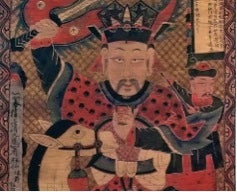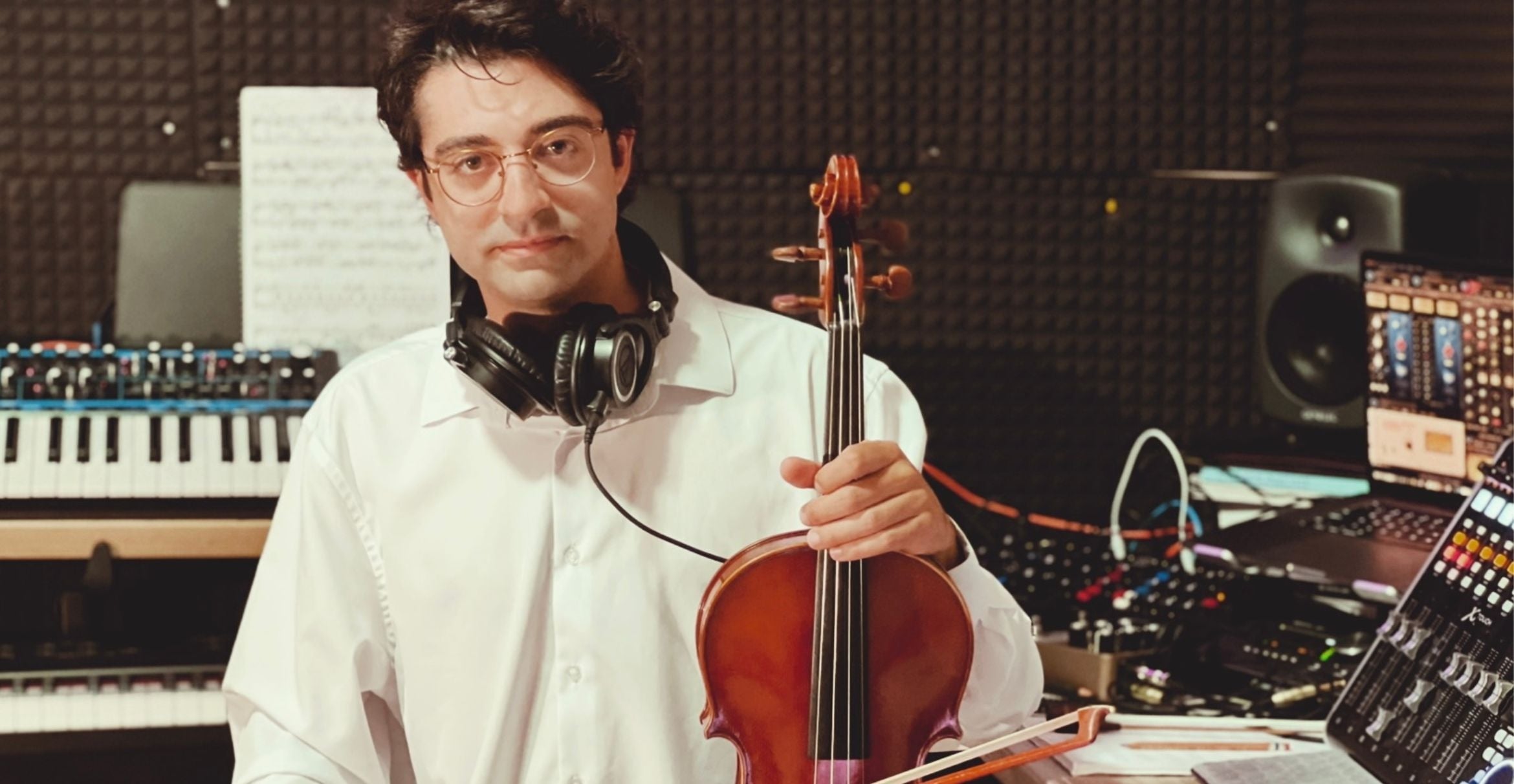Art, Design & Architecture Museum Winter Exhibitions
A group of four varied exhibitions have opened at UC Santa Barbara’s Art, Design & Architecture Museum, each centered on a different place in the world, a different time period, and a very different medium.
“How to Make the Universe Right: The Art of the Shaman from Vietnam and Southern China” features an unprecedented group of scrolls and ceremonial objects of the Yao people and other groups from Vietnam and Southern China. This tradition of Shamanist practice brings together Daoist and Buddhist deities, Confucian ancestor worship and Animism.
The scroll paintings, costumes, masks, instruments and other ceremonial objects represent an unbroken link to the past of Asian mountain cultures whose roots extend 2000 years. Scrolls vary in number from groups of three to complete sets of 17 or more, depending on the shaman’s stature and the intended purpose of the work. The complete Daoist pantheon is represented, including the Three Pure Ones, the Jade Emperor and the Master of Saints. The spiritualist stories represented in the scroll paintings also include celestial being such as the Three Merciful Ones, the Four Heavenly Messengers and the Ten Kings of Hell, and divine animals such as tigers, dragons and lion-dogs.
As the 2014 artist-in-residence, alumnus Eric Beltz is presenting an ambitious new project, “The Cave of Treasures.” The title refers to three recurring themes in Beltz’s work that are commonly understood as harmful — Medusa, Poison Oak and the swastika — and is rooted in the artist’s academic research into legends, tragedies, misinterpretations and evolutions of iconography surrounding mythological figures, plants and symbols. These manifest in a drawing in silver ink on black paper, a large-scale wall drawing and a wood-and-concrete sculpture containing live poison oak. “The Cave of Treasures” is Beltz’s first solo museum exhibition and represents the 10-year anniversary of his graduation from UCSB.
In conjunction with his exhibition, Beltz has designed a limited edition, do-it-yourself, counted cross-stitch pattern. It is available in an edition of 50, and includes a letter of authenticity with the artist’s signature and edition number.
“Fletcher Benton: The Artist’s Studio” examines the artistic process of sculptor Fletcher Benton, who is known for his large-scale geometric steel sculptures. Works included in the exhibition are drawn directly from the artist’s studio and demonstrate how he moves from initial conception to finished form. This installation celebrates the recent donation to the museum of “Folded Circle and Arc,” 2012, a monumental outdoor sculpture by the artist. It is a gift from Yoel and Eva Haller.
Organized by the Sonoma Valley Museum of Art, the exhibition is curated by Bruce Robertson and Rebecca Harlow, acting director and curatorial assistant, respectively at the Art, Design & Architecture Museum, are curating the exhibition in conjunction with the artist and with Kate Eilertsen, executive director of the Sonoma Valley Museum of Art.
After World War II, a generation of young, London-based architects, artists, and writers rethought the art and architecture of a culture fascinated with American consumerism, pop culture, mass communication, and visions of a better tomorrow. In 1956, several of these architects, painters, and sculptors collaborated on “This is Tomorrow.” The exhibition at London’s Whitechapel Art Gallery presented 12 group shows drawn from the everyday, which questioned the tenets of traditional and modernist art.
Recently, Geoffrey Holroyd, formerly of London and now of Santa Barbara, donated to the museum's Architecture and Design Collection the artwork that he, Lawrence Alloway, and Toni del Renzio created as Group 12 for the 1956 exhibition. “This was Tomorrow” explores Group 12’s contribution to the exhibition, as well as the architecture and design works of Geoffrey and June Holroyd.
All four exhibitions continue through May 1.
Other events at the museum include a cross-stitch workshop at 5:30 p.m. on Feb. 18 and an exhibition walkthrough with artist Eric Beltz and Ann Bermingham, professor emeritus of the history of art and architecture. They will discuss Beltz’s current installation, “The Cave of Treasures,” at 5:30 p.m. on Feb. 25.
At 2 p.m. on March 15, Beltz, along with Bob Mueller, research associate at the Santa Barbara Botanic Garden, and Jan Timbrook curator of ethnography at the Santa Barbara Museum of Natural History, will discuss the well-known phrase “Leaves of three, let it be,” and the painful relationship between the Poison Oak plant and California native peoples. Beltz will discuss how and why this plant features in many of his drawings.
More information about the exhibitions is available at http://www.museum.ucsb.edu.
The Art, Design & Architecture Museum is open Wednesday through Sunday from noon to 5 p.m. Admission is free.







